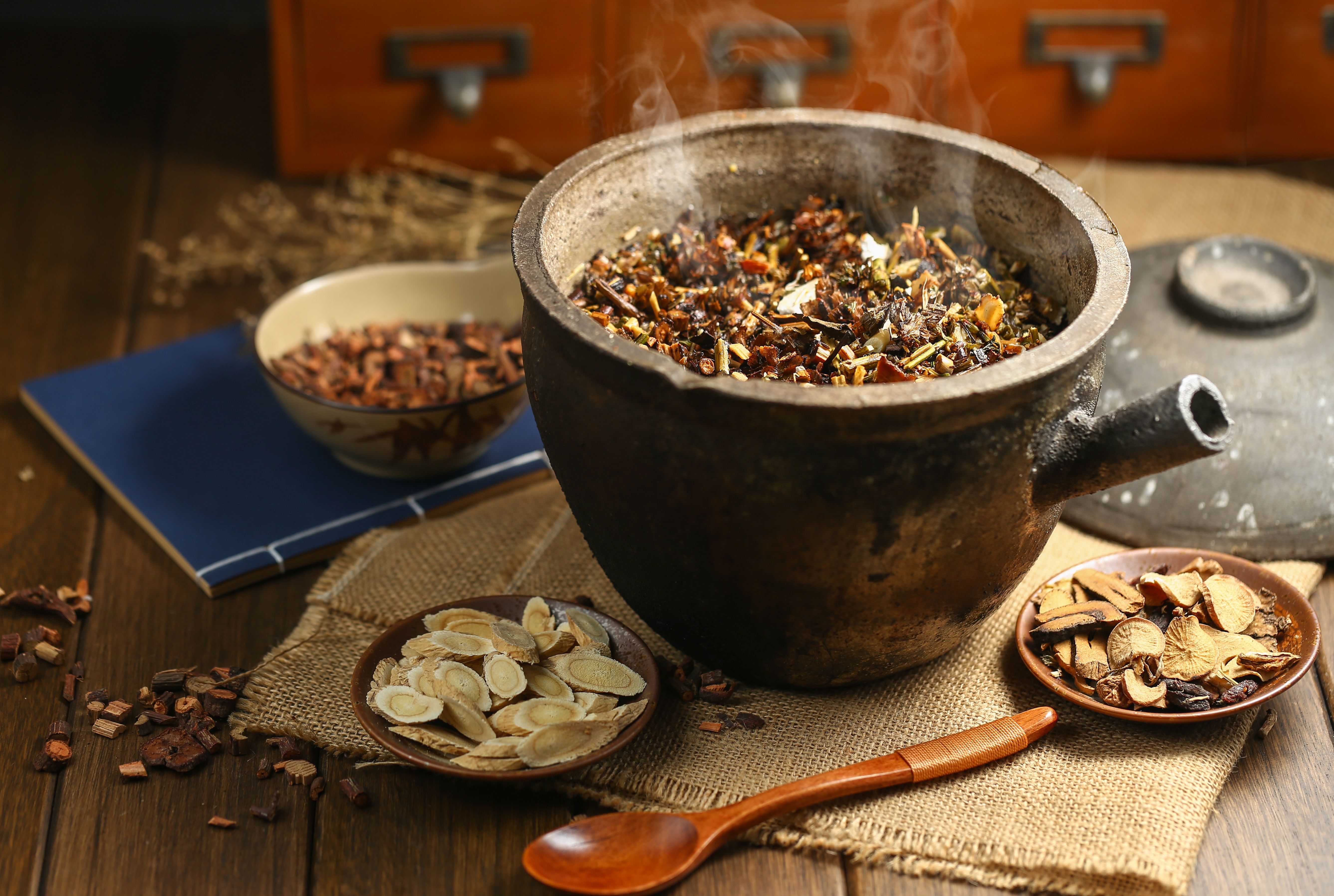UHPLC-Q-Orbitrap-MS/MS Used to Identify Active Compounds in Traditional Chinese Medicine
Scientists from Changchun University of Chinese Medicine in Changchun, Jilin, China used ultra-high performance liquid chromatography-quadrupole-orbitrap mass spectrometry (UHPLC-Q-Orbitrap-MS/MS) analysis to identify the active compounds in TongFu XieXia Decoction for treating intestinal obstruction. Their findings were published in Rapid Communications in Mass Spectrometry (1).
Chinese traditional herbal medicine in casserole | Image Credit: © xb100 - stock.adobe.com

TongFu XieXia Decoction (TFXXD) is a formulation that is rooted in traditional Chinese medicine (TCM). It serves as an advanced version of the Da Cheng Qi decoction, which is a classic Chinese herbal formula that is used to treat intestinal obstruction (IO), demonstrating significant therapeutic efficacy in the process (2). However, because of the intricate nature of the herbal composition, scientists have yet to clarify the principal constituents and potential mechanisms of TFXXD. For this study, the scientists aimed to identify the active compounds and molecular targets of TFXXD, hopefully elucidating its anti-IO mechanisms in the process.
For qualitatively identifying the principal constituents of TFXXD, the scientists performed ultra-high performance liquid chromatography-quadrupole-orbitrap mass spectrometry (UHPLC-Q-Orbitrap-MS/MS) analysis. PharmMapper software, a WHAT? LET’S DEFINE, was used to facilitate the prediction of potential molecular targets, while protein–protein interaction analysis was conducted using STRING 11.0. STRING 11.0 is a database that “aims to collect, score and integrate all publicly available sources of protein–protein interaction information, and to complement these with computational predictions”, with the goal of eventually creating “a comprehensive and objective global network, including direct (physical) as well as indirect (functional) interactions” (3). Gene ontology and Kyoto Encyclopedia of Genes and Genomes pathway enrichment analyses were then performed, the former is an analysis method for enrichment analysis on gene sets while the latter is used for the “systematic analysis of gene functions, linking genomic information with higher order functional information” (4,5). From there, a “compounds-target-pathway” network was carefully constructed, and finally, molecular docking studies were performed to record the interactions between the core target and the crucial compound.
Sixty-five components were identified using UHPLC-Q-Orbitrap-MS/MS analysis, all with high precision and sensitivity. Additionally, 64 potential targets were identified as integral to TFXXD bioactivity in IO treatment. The Gene Oncology enrichment analysis revealed 995 distinct biological functions, while the Kyoto Encyclopedia of Genes and Genomes enrichment analysis identified 143 intricate signaling pathways. The molecular docking studies substantiated the notable affinity between the TFXXD bioactive constituents and corresponding targets in the context of IO. Further, TFXXD exerts its therapeutic effects in IO through a multifaceted interplay between multiple compounds, targets, and pathways. “The integration of network pharmacology with UPLC-Q-Orbitrap-MS/MS has emerged as a promising strategy to unravel the intricate web of molecular interactions underlying herbal medicine,” the scientists concluded (1). However, they also emphasize the need for further in vivo and in vitro experiments before this approach can be used in practice.
References
(1) Ma, L.; Wu, Y.; Luo, J.; Li, F.; et al. Identifying the Active Compounds and Mechanism of Action of TongFu XieXia Decoction for Treating Intestinal Obstruction Using Network Pharmacology Combined with Ultra-High Performance Liquid Chromatography-Quadrupole-Orbitrap Mass Spectrometry. Rapid Commun. Mass Spectrom. 2023, 38 (2), e9664. DOI: 10.1002/rcm.9664
(2) Yang, B.; Xu, F-Y.; Sun, H-J.; Zou, Z.; et al. Da-Cheng-Qi Decoction, A Traditional Chinese Herbal Formula, for Intestinal Obstruction: Systematic Review and Meta-Analysis. Afr. J. Tradit. Complement. Altern. Med. 2014, 11 (4), 101–119. DOI: 10.4314/ajtcam.v11i4.17
(3) Szklarczyk, D.; Gable, A. L.; Lyon, D.; Junge, A.; et al. STRING v11: Protein–Protein Association Networks with Increased Coverage, Supporting Functional Discovery in Genome-Wide Experimental Datasets. Nucleic Acids Res. 2019, 47, D607–D613. DOI: https://doi.org/10.1093/nar/gky1131
(4) GO Enrichment Analysis. National Human Genome Research Institute 2024. https://geneontology.org/docs/go-enrichment-analysis/ (accessed 2024-5-16)
(5) Kanehisa, M.; Goto, S.; KEGG: Kyoto Encyclopedia of Genes and Genomes. Nucleic Acids Res. 2000, 28 (1), 27–30. DOI: https://doi.org/10.1093/nar/28.1.27
Carol Robinson Awarded 2024 Lifetime Achievement European Inventor Award
July 24th 2024Carol Robinson of the University of Oxford has received the European Inventor Award 2024 for Lifetime Achievement from the European Patent Office for her work bringing mass spectrometry to structural biology.
Microseparations and Analysis Covered at HPLC 2024
July 23rd 2024At HPLC 2024 in Denver, Colorado, various sessions will be led by experienced scientists, covering different aspects of chromatography techniques and maximizing their effectiveness. Here is some information about tomorrow’s sessions.
Automated LC Method Development: An HTC-18 Interview with Bob Pirok
July 23rd 2024At HTC-18 in Leuven, Executive Editor of LCGC International, Alasdair Matheson, spoke to this year’s winner of the 2024 HTC-18 Innovation Award, Bob Pirok from the University of Amsterdam, about his innovative research on automated LC method development.